Effective Termite Control & Treatment Services Singapore
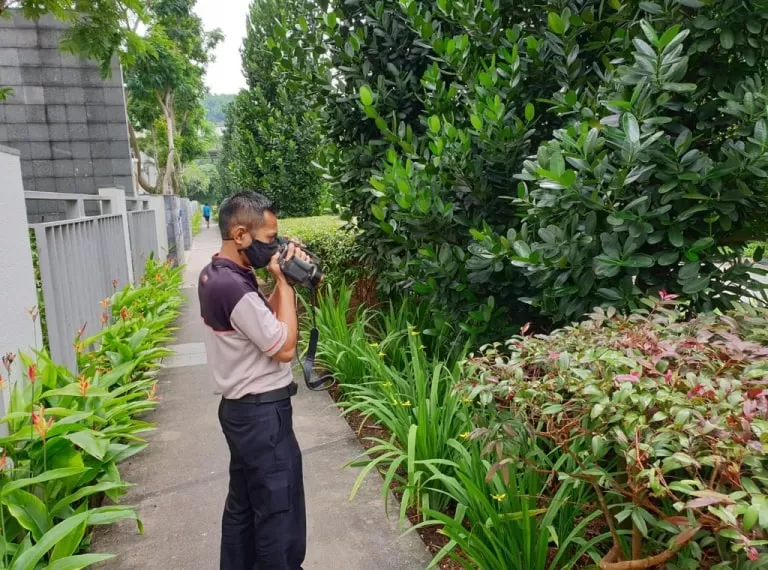
Thermal Imaging
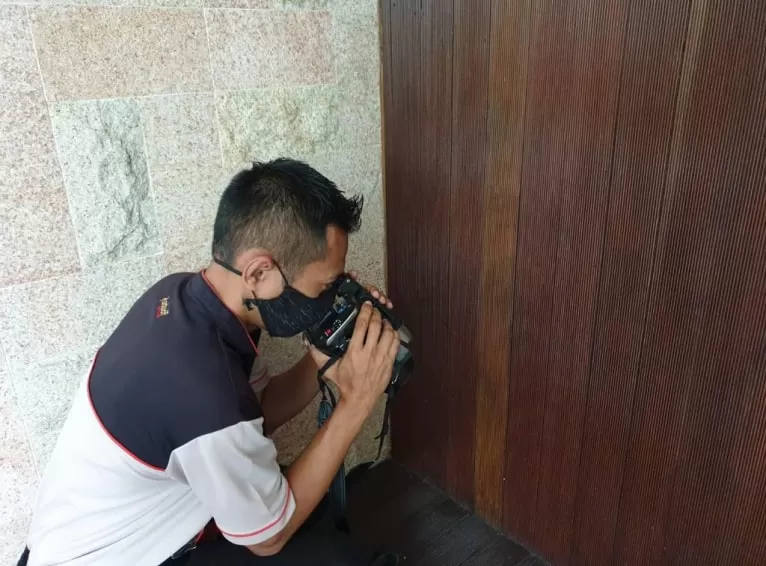
Thermal imaging using TermiCam technology can confirm the presence of Subterranean Termites at built-in structures such as doors.

Thermal imaging using TermiCam technology can confirm the presence of Subterranean Termites at tree trunks.
Termite infestation poses serious issues to household and commercial property as well as hygiene. It is highly imperative to engage a legitimate pest control company in Singapore in order to prevent further damage.
With over a decade of experience as a termite specialist in Singapore, we have successfully carried out numerous termite control and termite treatment services, including termite baiting, in-ground stations, corrective treatments, soil treatments, and spot treatments for residential, industrial, and commercial properties.
Our team is knowledgeable about the three types of termites and can recommend the best termite treatment program. Customer satisfaction and the use of only high-quality methods is our main priority. Our staff are NEA-certified professionals with extensive experience in the termite industry. We provide a tailored control program that guarantees the elimination of termite infestations and protection from future damage. At Aardwolf Pestkare, we strive for excellence in service and fair pricing.
Termite Control Services
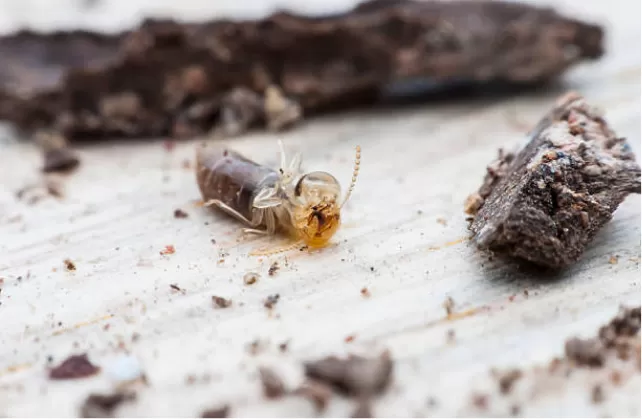
Termite Baiting Services
Our termite baiting procedures involve using bait stations to control and eliminate termite infestations. These bait stations contain a food source that attracts termites, which the bait will poison. The bait stations are placed around the perimeter of a building and in areas where termite activity is detected. Our termite baiting service aims to eliminate the entire colony of termites rather than just treating individual termites. Therefore, it can be a more effective method of termite control and can also prevent future infestations.
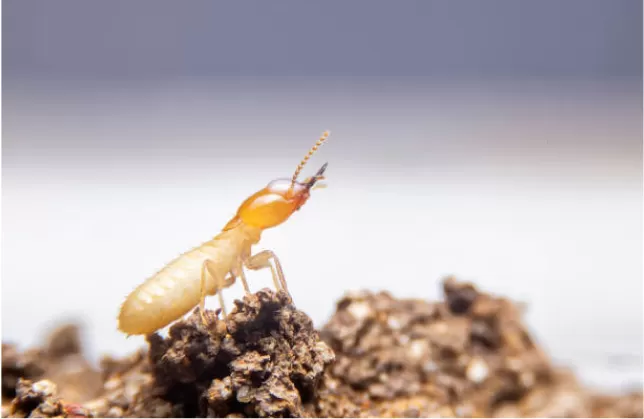
Soil Treatment Services
Specialized equipment is used to apply liquid or granular insecticide to the soil around a building for termite control by injecting the insecticide into the ground at a specific depth to create a chemical barrier that termites cannot penetrate. The process includes inspecting the building, identifying areas where termites are likely to enter, marking the perimeter, digging small holes, applying the insecticide, backfilling the holes, and providing instructions for caring for the treated areas. The process may vary depending on soil type, structure, and infestation severity.

Spot Treatment Services
Spot treatment termite control is a termite control method where we apply the insecticide directly to the areas where termites are found rather than creating a chemical barrier around the entire building or property. This method is used when a localized infestation or when a complete treatment is unnecessary or desired. Our technicians will inspect the facility to identify the specific areas where termites are present and apply the insecticide directly. This method can be more targeted and cost-effective than a complete treatment but may provide a different level of protection than a comprehensive barrier treatment.
Identifying Termites
Termites, also known as white ants in Singapore, are the most dreaded pests among property owners due to the severe damage. It’s particularly problematic since they flourish in tropical and subtropical places with high humidity and rainfall, such as Singapore, where they may easily inflict substantial damage worth thousands of dollars.
The drywood termite and the subterranean termite are the two most frequent termite species in Singapore. Both species can feed on cellulose present in wood for up to 24 hours without taking a break, regardless of species. Subterranean termites account for around 90% of termite-related damage in Singapore, making them the most troublesome. The structural damage can go unnoticed because they feed on the cellulose present in wood rather than the wood itself.
Below are the three termite species commonly found in Singapore:

Subterranean Termite(Coptotermes spp.)
One of Asia’s most well-known and destructive insect pests of wood. Every year, they cost millions of dollars in damage and can badly harm a family’s most prized property in their house. Subterranean termites dwell in underground colonies and are divided into castes that execute various colony activities.
As a result, these caste systems are divided into three groups: labourers, soldiers, and swarmers. Workers aid with foraging, child care, construction and maintenance, and even defence of the colony.
Habitat
- Requires moist environments
- Nests near the soil, kitchen sink, toilet door frame, and skirting near the window area
Reproduction
- Reproduce and lay eggs daily
- Termite queen produce 5,000 to 10,000 per month

Drywood Termite(Cryptotermes spp.)
Due to their lower moisture requirements, they are the second most damaging termite pest after subterranean termites, and they dwelt totally within the wooden substance. As a result, they eat the deadwood of living trees and the wood already in use. Drywood termites, on the other hand, are much more difficult to remove because, unlike Subterranean termites, they do not respond to termite baiting.
Therefore, drilling might be required in the affected areas.
Habitat
- Within dry, sound wood like wooden cabinets, antique wood, or doorframes
Reproduction
- Primary reproductive / swarmers – leave the colony to find a new colony to breed in
- Replacement reproductive (wingless) – remains in the colony to reproduce
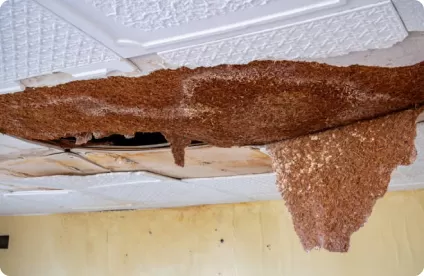
Dampwood Termite(Neotermes spp.)
Dаmрwооd tеrmitеs get their name from the fact that they dwell and eat in highly wet wood, especially in the garden area, tree bushes, stumps, and fallen trees.
These dampwood termites, unlike the subterranean termites in Singapore, do not build shelter tubes. This is because this species does not require any soil contact. Aside from that, they only consume moist wood or wood with high moisture content. As a result, their colonies are frequently found in the woods.
Habitat
- Woods with direct contact with soil or wooden materials
- Rotting wood, decaying timber, damp wood
Reproduction
- Produce few eggs in a few year but with ideal dampwood termite condition, colonies can become large
Suspect a termite infestation in your property?
Don’t waste time. Now is the time to schedule a treatment with one of our technical specialists.

Signs of Termite Infestation
You will find the following:
Subterranean Termites – Mud shelter tubes, that when broken will reveal active termites
Drywood Termites – Small piles of faecal pellets pushed out of the holes of infested wood. These pellets are small, hard, dry, and uniform in shape
Dampwood Termites – Small piles of faecal pellets but they are soft, damp, and uniform in shape.
If you want to know more about the signs of termite infestations, read our blog: 8 Signs of a Termite Infestation.
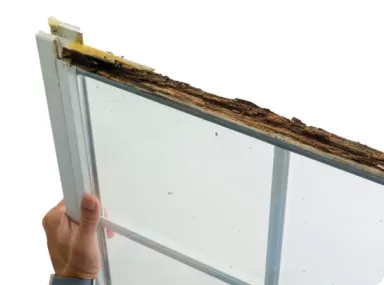
Termites On Glass Cover
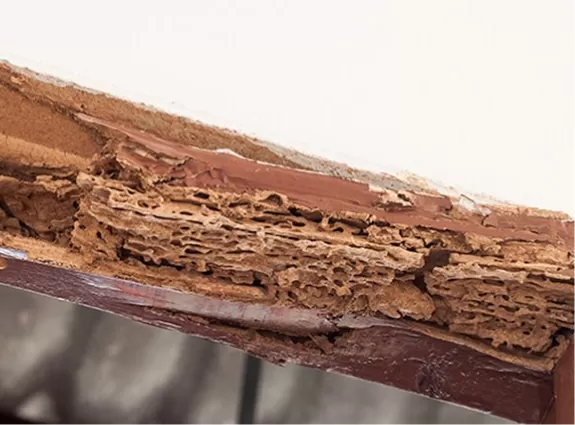
Door Frame Damaged By Termite
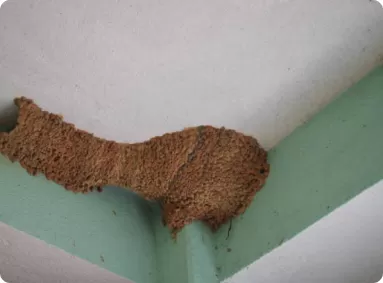
Mud Shelter Tube
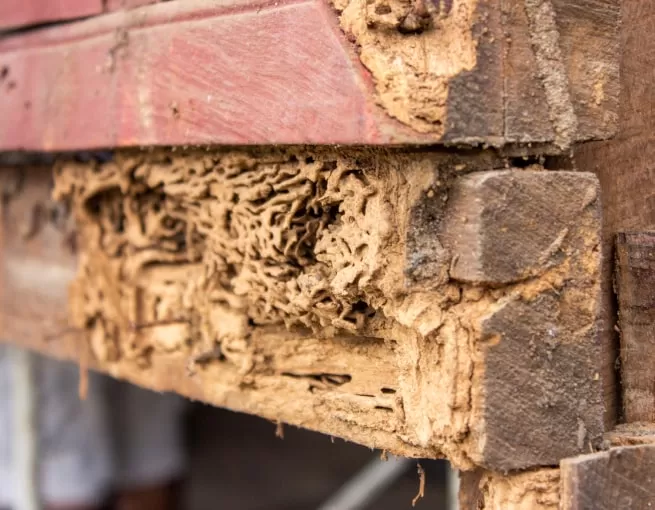
How to prevent termite infestation?
Termite infestations are a common occurrence in Singapore. People have been looking for solutions to reduce the infestation in their homes due to this. You will have to spend a lot of money on untimely repairs if termite control is not done. Termites are harmful insects that need water to live. They thrive in moist soil, where they construct a succession of underground nests. They then build tunnels to transport wooden bits of your house to their colony. Here are six strategies to keep termites out of your home.
One of the most critical stages in preventing termites in your home is to inspect it. The inspection includes checking that any structures made of wood or other materials that attract termites are in excellent working order, as well as assessing any wood-based sections of your home. In most cases, the inspection entails looking over the entire house. Cracks or holes in window and door frames, as well as sawdust underwood structures, are signs of termite infestation in your home.
One of the most critical stages in preventing termites in your home is to inspect it. The inspection includes checking that any structures made of wood or other materials that attract termites are in excellent working order, as well as assessing any wood-based sections of your home. In most cases, the inspection entails looking over the entire house. Cracks or holes in window and door frames, as well as sawdust underwood structures, are signs of termite infestation in your home.
One of the most critical stages in preventing termites in your home is to inspect it. The inspection includes checking that any structures made of wood or other materials that attract termites are in excellent working order, as well as assessing any wood-based sections of your home. In most cases, the inspection entails looking over the entire house. Cracks or holes in window and door frames, as well as sawdust underwood structures, are signs of termite infestation in your home.
One of the most critical stages in preventing termites in your home is to inspect it. The inspection includes checking that any structures made of wood or other materials that attract termites are in excellent working order, as well as assessing any wood-based sections of your home. In most cases, the inspection entails looking over the entire house. Cracks or holes in window and door frames, as well as sawdust underwood structures, are signs of termite infestation in your home.
One of the most critical stages in preventing termites in your home is to inspect it. The inspection includes checking that any structures made of wood or other materials that attract termites are in excellent working order, as well as assessing any wood-based sections of your home. In most cases, the inspection entails looking over the entire house. Cracks or holes in window and door frames, as well as sawdust underwood structures, are signs of termite infestation in your home.
One of the most critical stages in preventing termites in your home is to inspect it. The inspection includes checking that any structures made of wood or other materials that attract termites are in excellent working order, as well as assessing any wood-based sections of your home. In most cases, the inspection entails looking over the entire house. Cracks or holes in window and door frames, as well as sawdust underwood structures, are signs of termite infestation in your home.
Termite control can be tricky, partly because of the humid weather in Singapore. A general guideline to follow would be to avoid stockpiling old newspapers and other wood-based materials in the storeroom that is damp and with no air circulation. Read our blog for a comprehensive list on how to prevent termite infestations.
In the case of Drywood Termites, replace damaged wood as soon as possible, to prevent cross infestation. For long-term peace of mind, seek the best termite control in Singapore.
The Best Termite Control in Singapore
Aardwolf Pestkare - Your Best Choice For Termite Control Services in Singapore
Getting rid of termites can be pretty tricky. Spraying a can of aerosol insecticide will only kill the soldier and worker termites scavenging outside their nest. As a mature termite nest has an average of 1 million inhabitants, you are unlikely to eliminate the rest of the colony. Instead, you may force them to reappear in another place where you cannot detect their presence, and the damage will continue undisturbed until it is too late!
Aardwolf Pestkare offers Singapore’s best termite control services for residential, commercial and industrial properties in Singapore. You can depend on our team to eliminate the termite pest control problem.
Termite Pest Control in Singapore requires species-specific treatment best conducted by our Aardwolf Pestkare Technicians, who will target the source of the infestation. Before we treat, our qualified Thermographers will scan your home with Thermal Imaging to confirm the entry points of the termites.
Install baiting stations to eliminate termites away from buildings and the infestation treated outdoors. Especially in Singapore, for long-term protection, you should termite-proof your property by creating a termiticide barrier around the building structure so that the termites will be prevented from invading. Prevention is still the best cure against termites.
